Hale-Bopp
Contents
 Comet Hale-Bopp in April 1997 / sternwarte.at
Comet Hale-Bopp in April 1997 / sternwarte.atOne of the most exciting moments in human history was the arrival the brightest comet in our solar system Hale-Bopp. Many aspects of this comet were both unique as well as the events that surrounded it. Appearing at about the time that the internet was in full swing, Hale-Bopp was the most widely covered and talked about comet in the world.
Discovery
Hale-Bopp discovery was by two different observers independently at the same time, Alan Hale and Thomas Bopp, in 1995. At the time it was near the Messier 70, a globular cluster, in the Sagittarius constellation. Once both astronomers checked their maps and saw that there were no other comets within that area, they contacted the Central Bureau of Astronomical Telegrams of the comet's position. Research into the comet has revealed that the comet was possibly seen during Pharaoh Pepi I reign sometime around 2332-2283 BC. Hieroglyph's on Pepi's pyramid point to this theory.
Approach
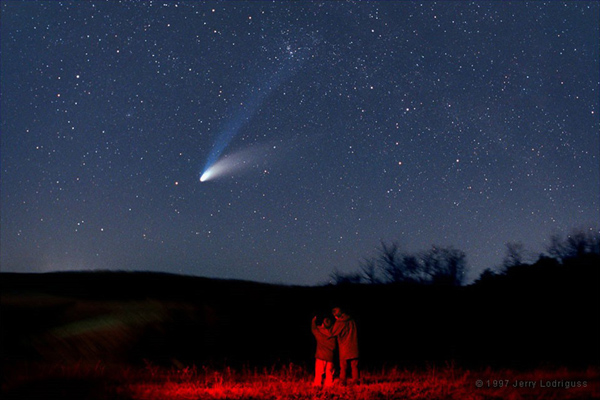 Hale-Bopp: The Great Comet of 1997 / nasa.gov
Hale-Bopp: The Great Comet of 1997 / nasa.govDuring the time of its discovery, Hale-Bopp was about the same distance as Jupiter and Saturn from the sun and was at a high magnitude of 10.5. What was unusual is that at this distance, most comets are still very faint but Hale-Bopp's coma was very visible even to amateur telescopes. There was even an image from 1993 when Hale-Bopp was still at a distance where comets were unable to be seen but Hale-Bopp was very much visible.
Hale-Bopp could be seen by the naked eye from Earth in May 1996 and was visible for 18 months before it left the inner solar system. It remained very bright during this time and even developed a second tail as it drew closer to the sun. The first tail, 40 to 45 degrees, had a blue hue and was primarily made of gasses where the second tail was more yellow and contained mostly dust.
Orbital Period
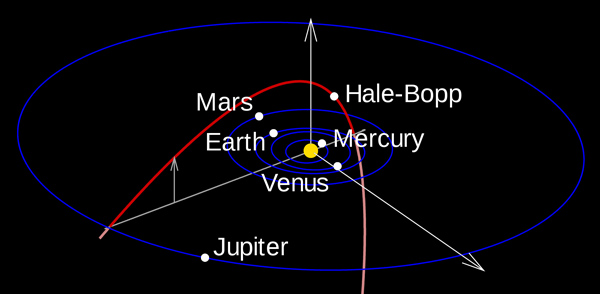 Hale-Bopp at perihelion on April 1, 1997 / wikipedia.org
Hale-Bopp at perihelion on April 1, 1997 / wikipedia.orgAstronomers believed that it was in the inner solar system about 4,200 years ago but tidal forces may have sped up its orbit to about 2,533 years. Hale-Bopp expected to return to the inner system sometime around circa 4380 CE.
Composition
Hale-Bopp had a third tail. This third tail was very faint and was only seen with very powerful equipment. It primarily consisted of sodium and neutral atoms and not ions and was about 50 million km (31 million miles) in length. From observations, it appeared that the sodium derived from the coma of the comet but it has not been determined how they were there.
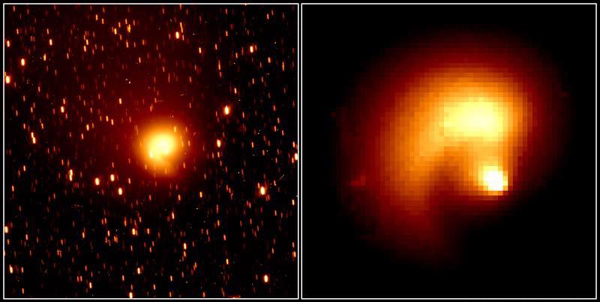 Hubble Sees Material Ejected From Comet Hale-Bopp / nasa.gov
Hubble Sees Material Ejected From Comet Hale-Bopp / nasa.govA chemical inert and highly volatile, noble gas argon, was also detected on Hale-Bopp but was not seen on other comets. This could aid in helping scientist to find the different temperature history of a comet's ice. Each of these responds in a different aspect during certain temperature ranges. The presence of this gas has led scientist to believe that Hale-Bopp formed in the Kuiper Belt area and then moved into the Oort Cloud.
Another unusual aspect of Hale-Bopp is it has a satellite. A hypothesis suggested that Hale-Bopp may have a binary nucleus and images taken by Hubble Space Telescope confirmed this theory. A binary nucleus is basically two nucleus' orbiting around one another as if one. Never before has any comet had a stable binary nucleus aspect to them.
Current State
Hale-Bopp is still being imaged by the Herschel Space Observatory and is showing that fresh frost layer covers it. The comet will be visible until 2020 and its brightness will diminish to become invisible at that point.
Future Predictions
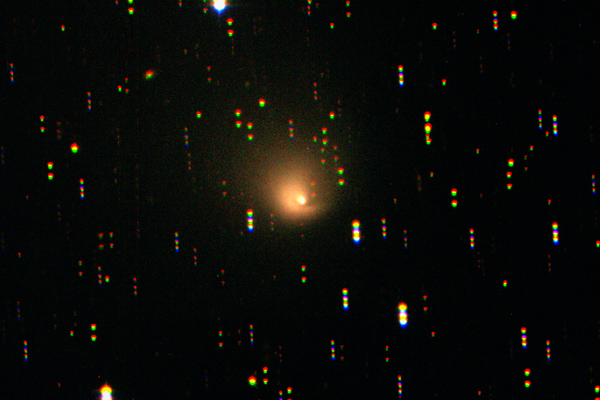 Hale-Bopp at a distance of 2 billion km from the Sun / eso.org
Hale-Bopp at a distance of 2 billion km from the Sun / eso.orgHale-Bopp may become a sungrazing (extremely near the sun) comet in time. This is due to it having a high inclination and the effect of the gravitational pull of the planets that it passes along the way. It's estimated at having a 15% chance of this occurring. There is also a possibility that Hale-Bopp may have had a close meet with Jupiter sometime around 2,215 BC that almost ended in a collision. It is probable that Hale-Bopp's orbit changed as a result of this.
Although Hale-Bopp had come close to Earth in its passing, it is highly doubtful that it would ever impact with Earth. However, if it were to do so, the impact would be catastrophic as its 60 km (37.3 miles) diameter would decimate the Earth and all its inhabitants.
Video Gallery

-
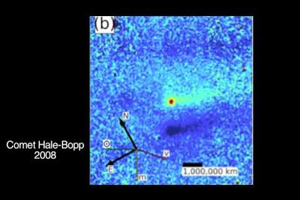 Hale-Bopp: the Electric Comet
Hale-Bopp: the Electric Comet
-
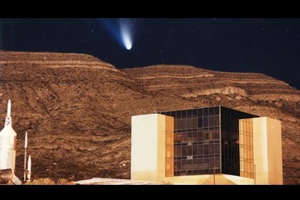 Comet Hale-Bopp
Comet Hale-Bopp
-
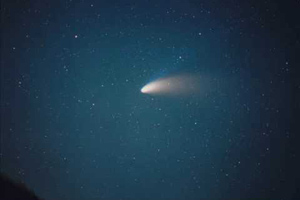 Comet Hale-Bopp (C/1995 O1)
Comet Hale-Bopp (C/1995 O1)
-
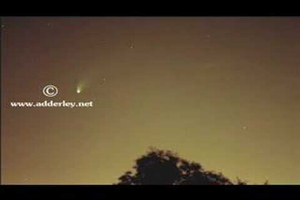 Hale Bopp Timlapse
Hale Bopp Timlapse